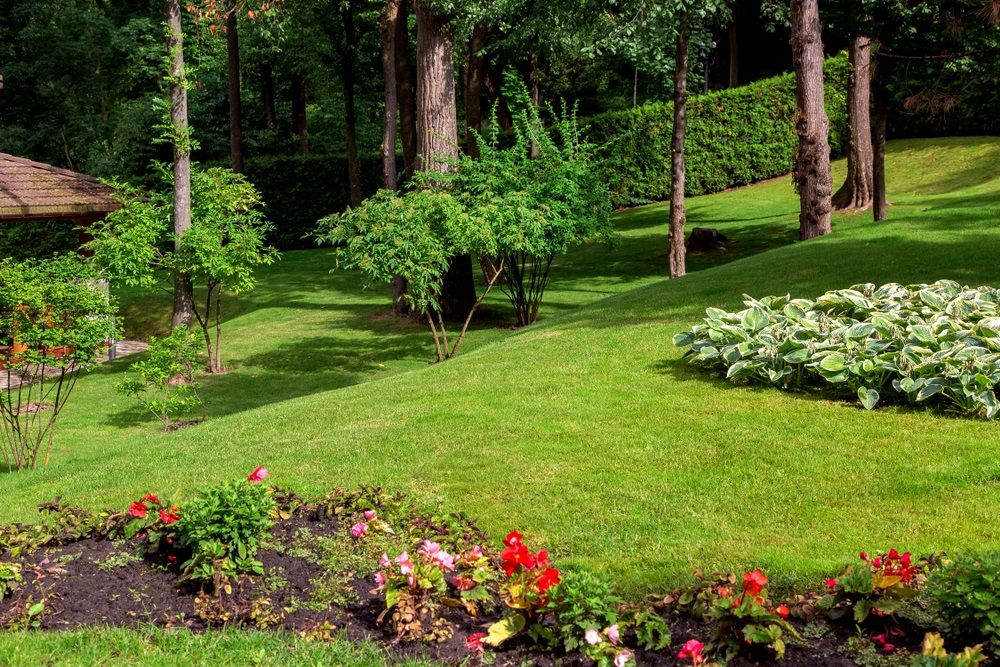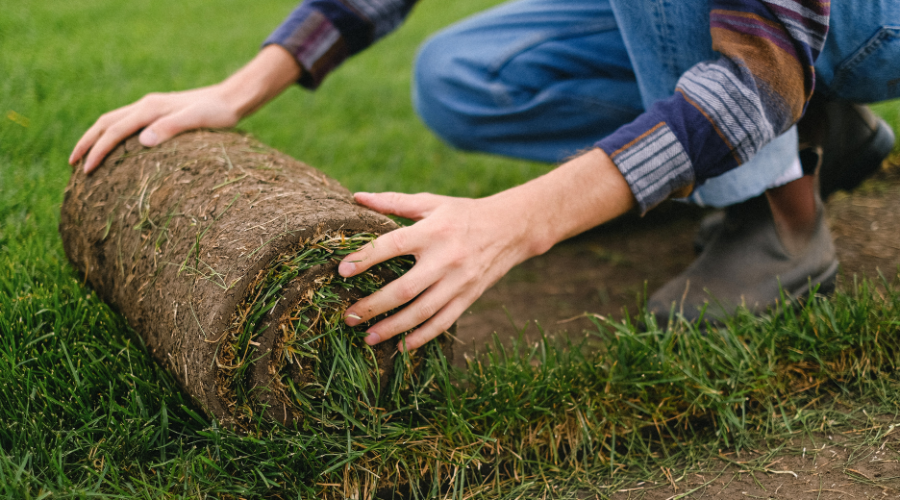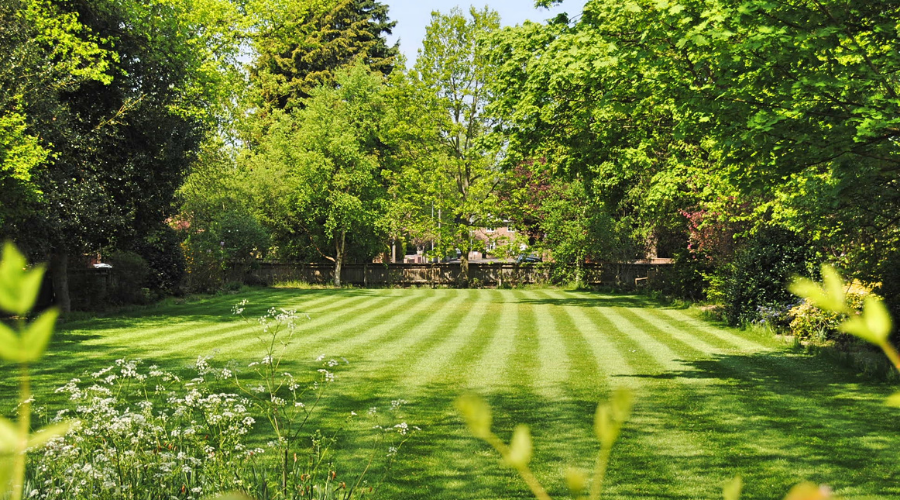Growing grass is no easy task. Growing grass on a slope? Now that's another story. Despite the fact that seeds easily washes away and soil erosion tends to occur more quickly, there is something luxurious and charming about rolling slopes across your backyard.
Fortunately, there are a number of things to do to ensure your grass properly grows on a slope. From how you plant seeds and plugs, to how you care for your lawn, erosion can be avoided.
Find out all the details below, including a list of all the tools you'll need and a step-by-step guide to walk you through the process.
Tools You'll Need to Grow Grass on a Slope
Image credits: Björn Forenius via Canva
Before you start planting your grass, there's a number of important tools and essentials you'll need to have at the ready. Find our list of all the necessities below.
- Tiller
- Hand trowel
- Gardening gloves
- Seed, sod, sprigs, and/or plugs
- Fertilizer
- Topsoil
- Rake
- Wooden stakes
- Straw or erosion control netting
How to Grow Grass on a Slope
Step 1: Choose Your Grass
Image credits: schulzie via Canva
Choosing the right grass for your slope is important since some species produce longer, stronger roots than others. You may also want to opt for a drought tolerant grass if you live in a drier climate.
Grass comes in a few different forms including seed, sod, sprigs, or plugs. Live roots are helpful for establishing a living plant more quickly, but it all depends on what you're looking for in terms of the final product. Seeds are the most inexpensive option while sod, sprigs, and plugs tend to add up.
Step 2: Prepare the Soil
Image credits: cjp via Canva
Now that you've got your grass picked out, it's important to prep the soil. Clear the area of weeds and loosen it with a tiller, removing stones and thick clumps of soil. If you're seeding, put some soil to the side for later. You can also apply some fertilizer to the soil to set things in motion.
Step 3: Planting or Seeding
Image credit: Anna Shvets via Pexels
Now that your soil is prepped, it's time to lay your sod or plant your seeds and plugs. If you're spreading seeds, mix it with some topsoil and sprinkle it over the area. A general rule is to use four pounds of seed per 1,000 square feet. You can protect the seed by covering it with erosion control netting or straw. This will help the grass seed stay in place and stop the soil from eroding.
Simply sprinkle the straw or unroll the netting, creating small holes if you are planting plugs. If you're opting to lay sod, use wooden stakes to help it stay in place until proper roots have been established. For sprigs and plugs, simply dig small holes and plant them, spreading them out evenly to allow the grass to fill in over time.
Step 4: Rake, Water, and Fertilize
Image credits: george tsartsianidis via Canva
Now that you've got your sod in place or seeds and plugs planted, it's time to properly care for your lawn. If you used seed, it's important to lightly rake the area to ensure proper coverage and to help the seeds work into the ground.
Whether you've planted plugs and sprigs or applied sod to the area, watering is important. Give the fresh grass a healthy drink helps it develop strong, healthy roots. Covering the seeded area in mulch or straw will help with moisture retention.
Tips for Preventing Soil Erosion
Image credits: David-Carter via Canva
Before you start planting grass on a slope, there are a few more tips to keep in mind. This focuses more on the aftercare portion and will help your lawn stay lush and green.
- Water the seeded area or sod regularly (once daily) to ensure it grows and develops roots
- Fertilize again 30 days after planting to encourage growth and help the grass become established
- Continue to water regularly after the grass has developed roots to help it stay healthy
- Mow and maintain your lawn properly
To Sum Up
With all this information at the forefront of your mind, your lawn should be lush and green in no time–even in a yard full of slopes and hills. The planting process is simple enough and your grass will only need minimal, regular care from there. So, say goodbye to patchy grass and hello to a proper maintenance routine!
Not sure if traditional turf is the right option for you? Consider these drought tolerant lawn alternatives instead!







